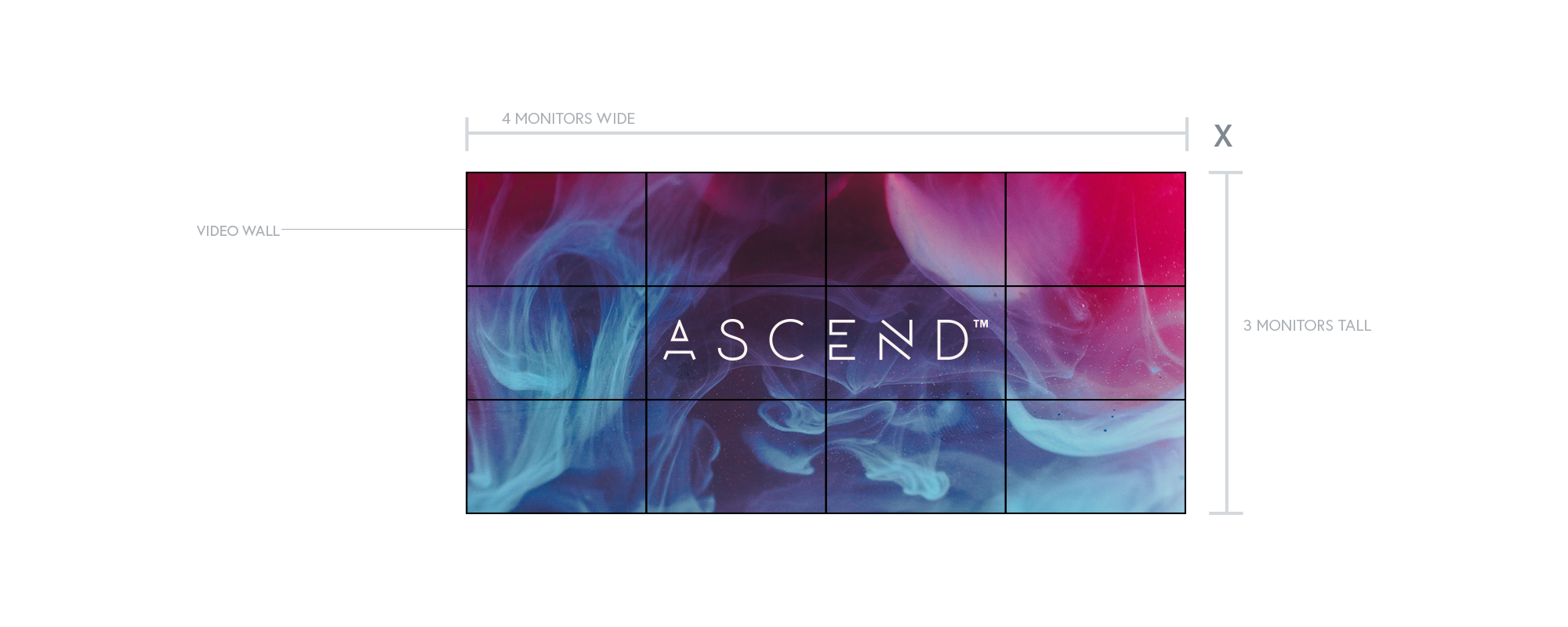
Brace yourself for a captivating journey as we unravel the evolution of stunning video walls from humble pixels to breathtaking perfection.
Join us as we explore the groundbreaking advancements that have transformed LCD video walls into powerful tools of communication and artistic expression.
Whether you’re a tech enthusiast or love immersing yourself in cutting-edge visuals, in this blog, you’ll uncover the awe-inspiring transformation that has taken place within this mesmerizing realm.
Get ready to be amazed!
What are LCD video walls?
LCD stands for liquid crystal display, a type of technology that uses liquid crystals to create images on a screen.
LCD video walls comprise multiple LCD screens tiled together to form a large display surface.
Each screen, or tile, has a thin bezel (the frame around the screen) that minimizes the gap between the tiles and creates a seamless image across the entire wall.
LCD video walls are versatile and adaptable, as they can be configured in different shapes, sizes, and orientations to suit any space and purpose.
They can display high-resolution images and interactive content to captivate and engage viewers.
LCD vs. LED Video Walls
LCD and LED video walls are two of today’s most popular video wall displays.
They both have advantages and disadvantages, depending on the application and environment.
So how do you choose which is best? Let’s explore their main differences and similarities.
Brightness
LED video walls are brighter than LCD options, which makes them ideal for outdoor or bright environments.
LED walls are also more energy efficient.
Resolution
LCD video walls can display 4K resolution, while LED video walls have varying resolutions depending on their pixel pitch (the distance between each LED pixel).
A smaller pixel pitch means higher resolution and closer viewing distance but also higher cost and complexity.
Bezel
LCD video walls have thin bezels that create a near-seamless image but are still slightly visible.
LED video walls have no bezels and allow seamless content. Still, they may have gaps or seams between the modules if not installed properly.
Durability
LED video walls are more durable and weather-resistant than LCD, as they have no glass components and can withstand harsh conditions.
LCD video walls are more fragile and susceptible to damage over time.
Cost
LED video walls are more expensive than LCD video walls initially and in the long run. They require more equipment, maintenance, and calibration than LCD video walls.
LCD video walls have lower upfront and operational costs but may have shorter lifespans and lower reliability.
As you can see, there is no clear winner between LCD and LED video walls. The best choice depends on your needs, preferences, budget, and space.
If you need help deciding which type of video wall is right for you, contact us.
How did LCD video walls evolve?
LCD video walls have come a long way since their inception in the late 1980s. Here are some of the major milestones in their evolution:
Late 1980s – Early 1990s
The first LCD video walls were introduced by Philips and Sharp.
They used rear projection technology, which involved projecting images from behind the screens onto a semi-transparent surface.
These video walls were bulky, expensive, and had low brightness and contrast.
Mid 1990s – Early 2000s
LCD video walls improved with the development of flat-panel technology, allowing thinner and lighter screens to be mounted on walls or stands.
They also had higher brightness and contrast, lower power consumption, and longer lifespan.
However, they still had thick bezels that created noticeable gaps between the tiles and reduced the image quality.
Late 2000s – Present
LCD video walls reached new heights of performance and aesthetics with the introduction of ultra-narrow bezel (UNB) and extreme-narrow bezel (ENB) screens. These screens have bezels as thin as 0.88 mm, which create a near-seamless image across the wall.
They also have higher resolution, wider viewing angles, deeper colors, and faster response times.
Moreover, they can be integrated with touch-screen technology, sensors, cameras, and other devices to create interactive and immersive experiences.
Pixels, Passion, and Possibilities
The evolution of LCD video walls is a remarkable journey that intertwines technology and artistry.
Ascend Studios has been a driving force in this evolution, shaping the landscape of immersive digital marketing.
Join us in embracing the fusion of LED and LCD and turning pixels into captivating stories that resonate with audiences far and wide.